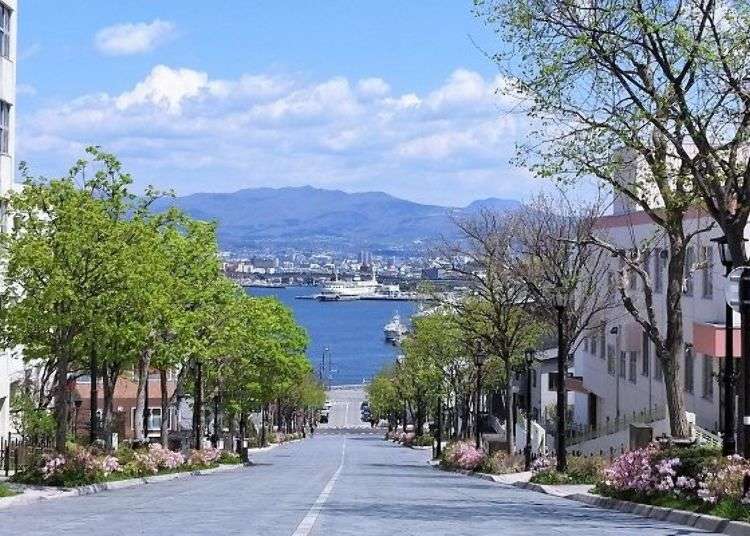
A stroll around Hakodate's Motomachi area is a sightseeing must when in Hokkaido!
Hakodate is a city overflowing with foreign atmosphere and many excellent photo spots, from the view of the harbor looking down from Hachimanzaka to its many other historical buildings and churches such as the Former British Consulate of Hakodate.
Hakodate has many attractions such as the night view from Mt. Hakodate and Goryokaku, but this time we will introduce recommended walking courses in the Motomachi area noted for its many scenic spots which can be walked in a couple of hours or so.
Where is Hakodate?
Hakodate is a port town facing the Tsugaru Strait in the southern part of Hokkaido. Along with Yokohama and Nagasaki it was one of the first Japanese ports to be opened to foreign trade in 1859. For that reason it was quick to acquire foreign culture and as a result there are many buildings of both Western style and a blend of Japanese and Western styles.
Most of these are in the western district near the port and especially concentrated in Motomachi. The surrounding area contains important cultural assets such as the Old Public Hall of Hakodate Ward and the Hakodate Orthodox Church and is designated a Preservation District for Groups of Traditional Buildings based on the Law for the Protection of Cultural Properties. Tourists and photographers all agree that they visit this area because of its beautiful streets.
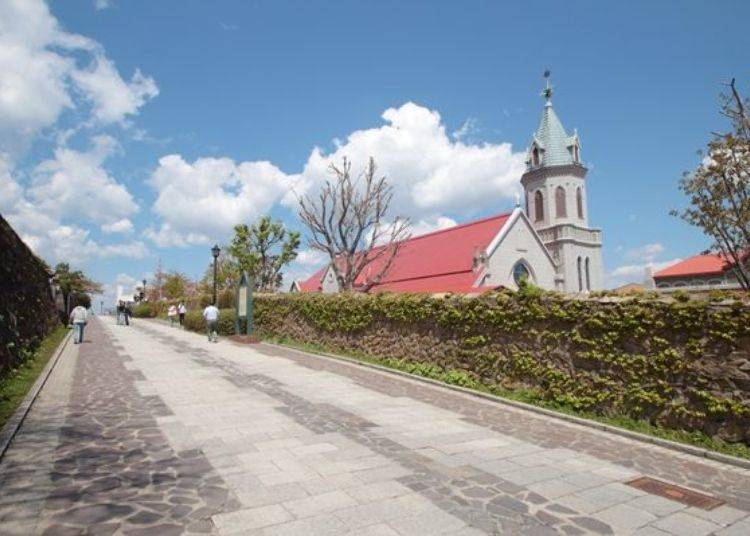
Just in the vicinity of Motomachi there are several famous places making this the perfect area to begin your sightseeing of Hakodate and here are some suggestions to assist you. We’ll introduce an easy to follow route that even those unfamiliar with the area will not have trouble following.
The city tram is convenient for seeing the sights of Hakodate!
When enjoying the sights of the city it is best to use the city trams (streetcars)

The closest tram stop to the area for starting a walking tour of Motomachi is Suehirocho. It is a 7-minute ride from the Hakodate Ekimae tram stop in front of JR Hakodate Station on a tram going in the direction of Hakodate Dock-mae.
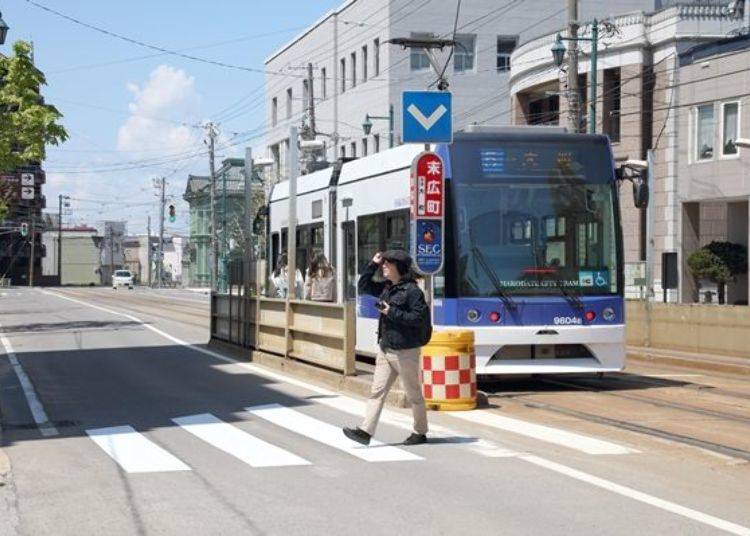
Feel the port-town atmosphere of Hakodate Motomachi going up the stone-paved Motoizaka
Get off the tram at Suehirocho and walk in the same direction that the tram is going, then turn left at the first traffic light. From here you can walk up Motoizaka. Milestones were used during the Meiji Era to measure distances and this place being the starting milestone gave the hill its name Motoizaka.
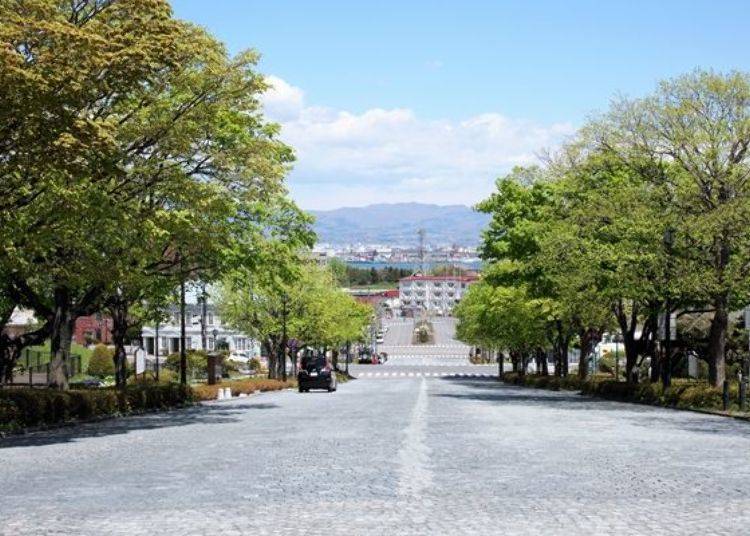
Let’s visit the Memorial Statue of the Visit of Commodore Matthew C. Perry located in a corner of a park halfway up the hill on the right side. It’s about a 5-minute walk from the Suehirocho tram stop.
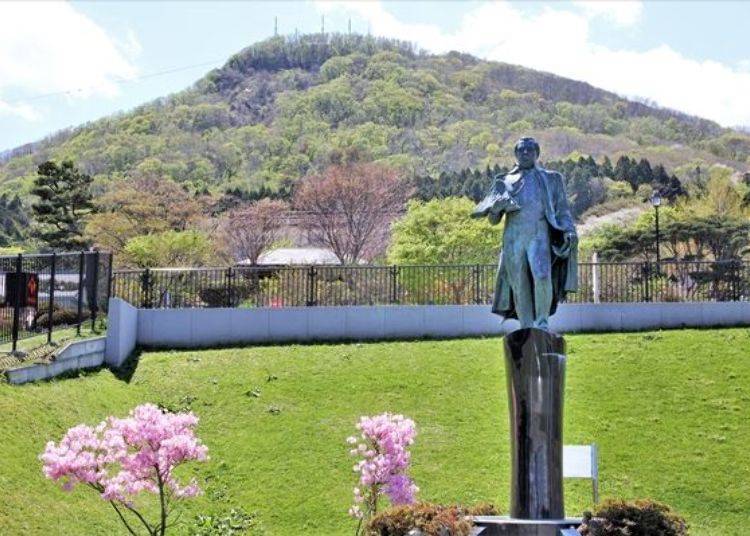
This memorial commemorates the arrival of Commodore Perry in 1854 when he arrived with five warships. These are referred to as the Kurofune [Black Ships] and the memorial was erected in 2002 to mark the 2004 150th anniversary of that event. Hakodate got its start as a port town with that arrival.
Enjoy a taste of foreign culture over afternoon tea at the Former British Consulate
After viewing the Perry memorial let’s next cross over the street and go to the Former British Consulate of Hakodate. This is a place where you will want to spend a bit of time. To enjoy the aesthetics and history of this place, I suggest you do so while enjoying an afternoon tea.
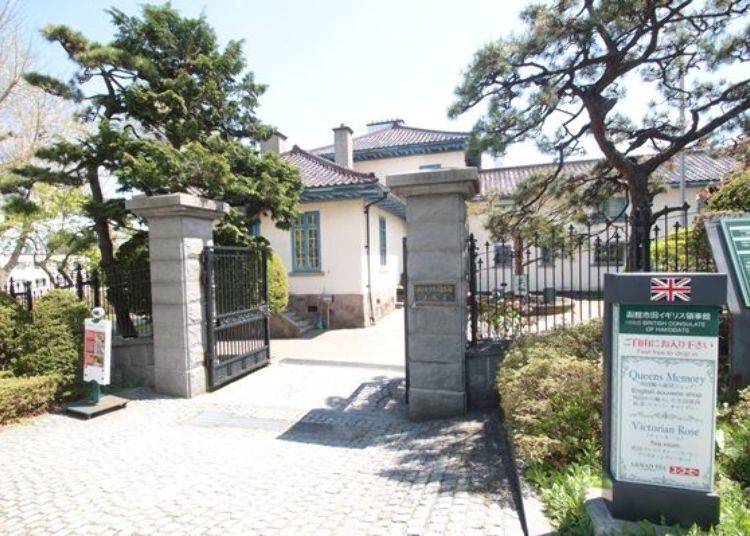
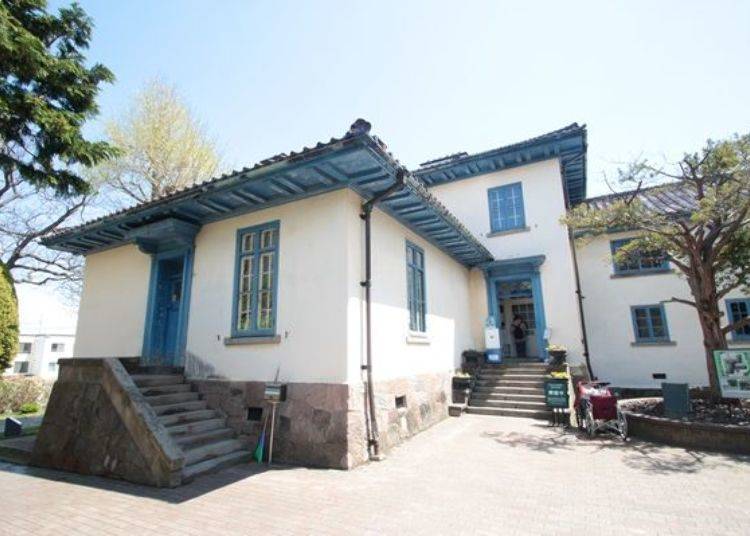
After paying the admission fee, follow the designated route to the second floor exhibition room.
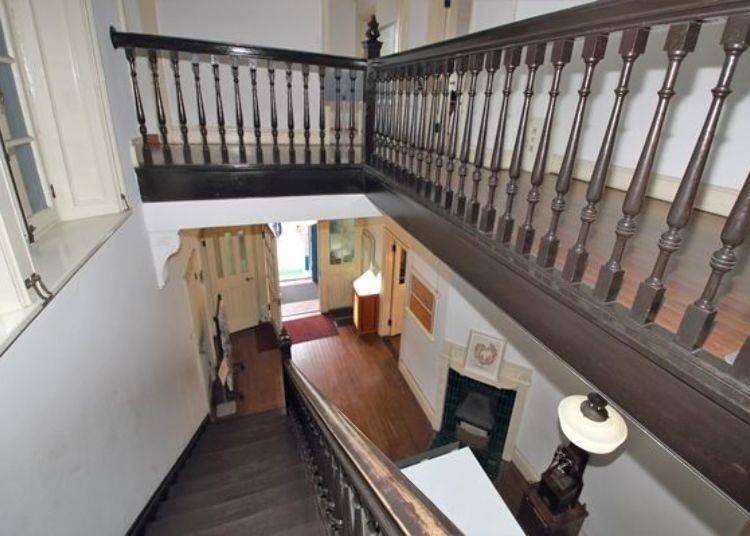
The exhibition room recreates what it was like when the 3rd British Consul Richard Eusden used this room for his office Not only can you tour this room, but also touch some of the furnishings and sit in the chair behind the desk to see what it must have felt like being consul.
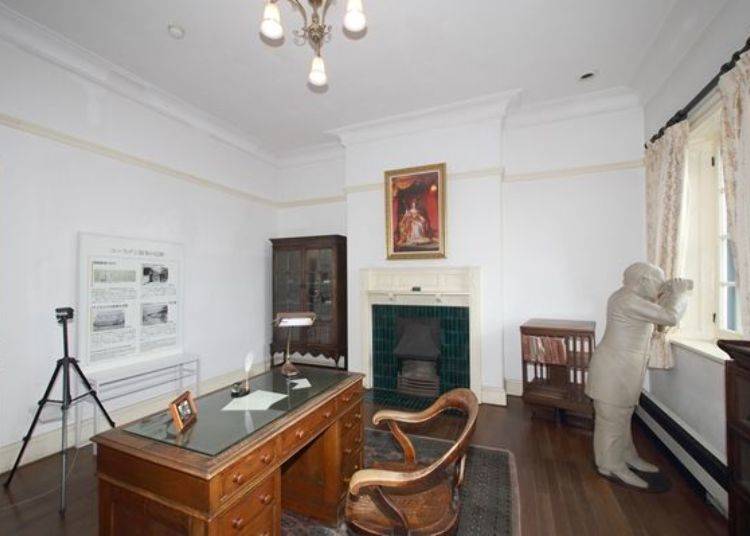
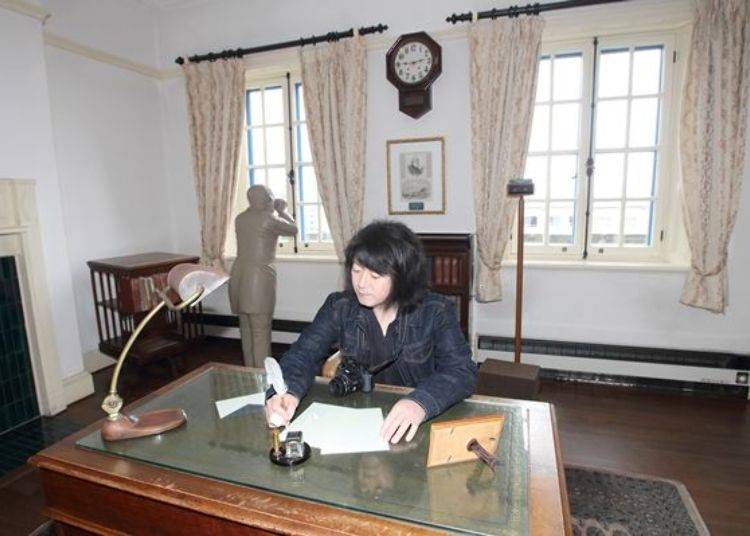
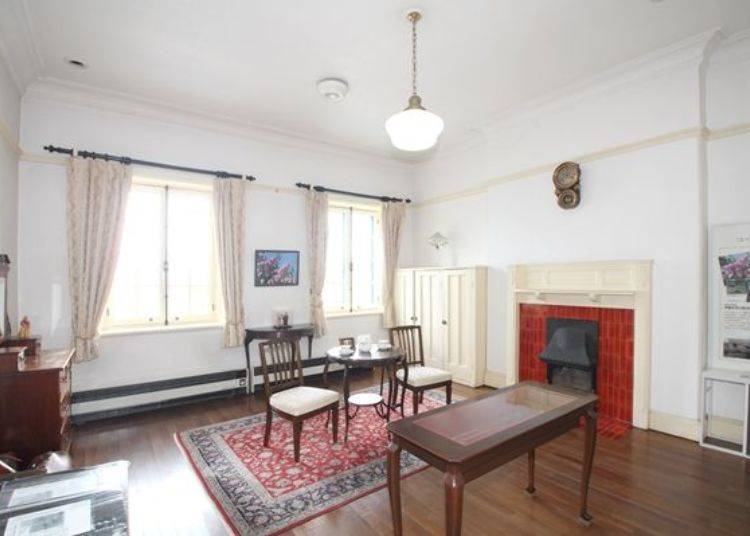
From the exhibition room next go to the Port Opening Museum next door. This facility introduces the history of the port before and after it was opened and the westernization of it afterwards. Though the museum is in a separate building they are connected by a corridor so it is possible to move between them without getting wet even if it rains.
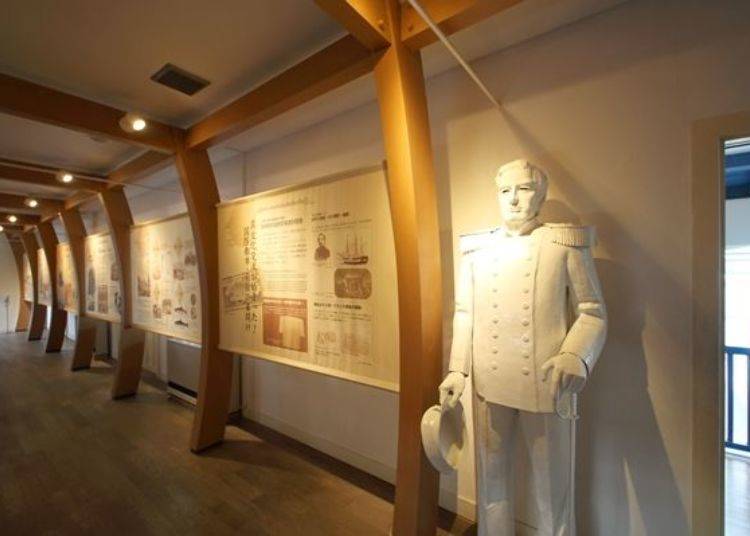
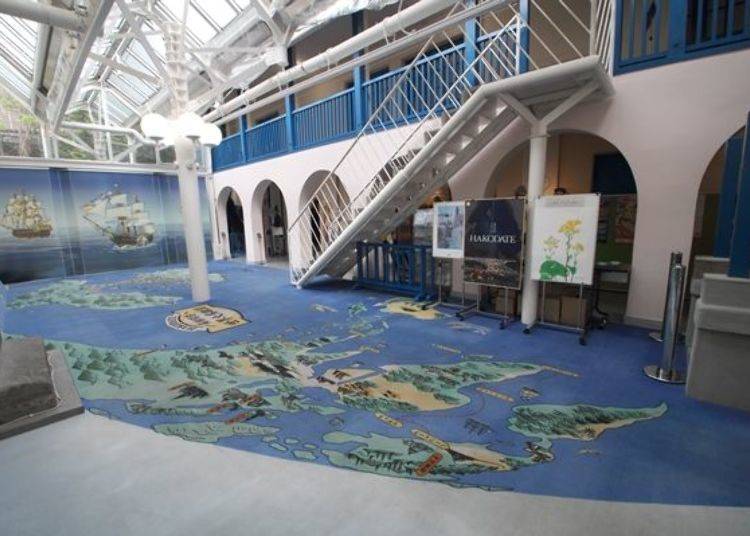
There is also a corner showing the lively influence of Western culture on Hakodate at a time when it was bustling with Westerners.
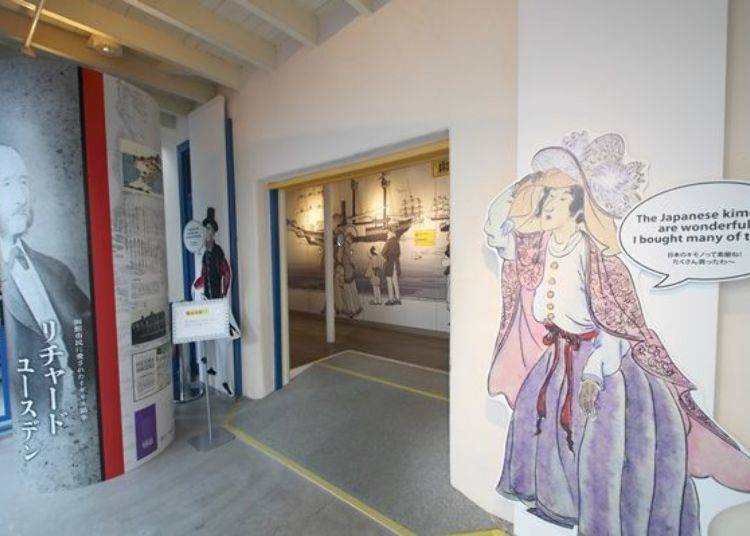
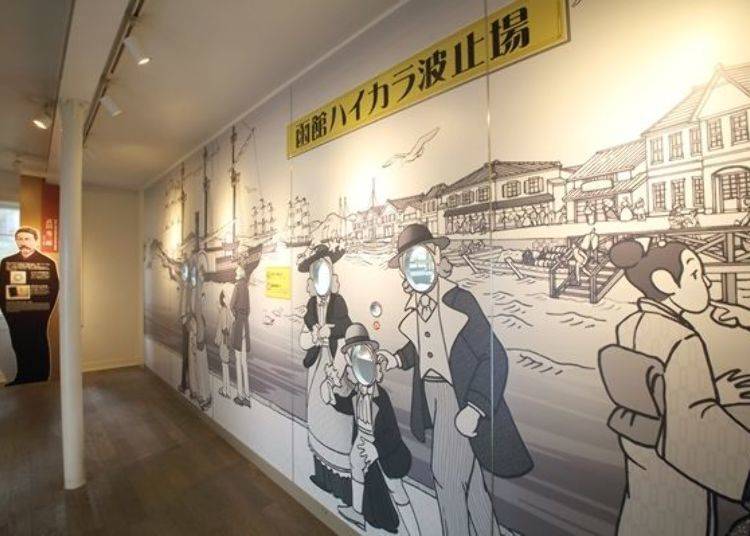
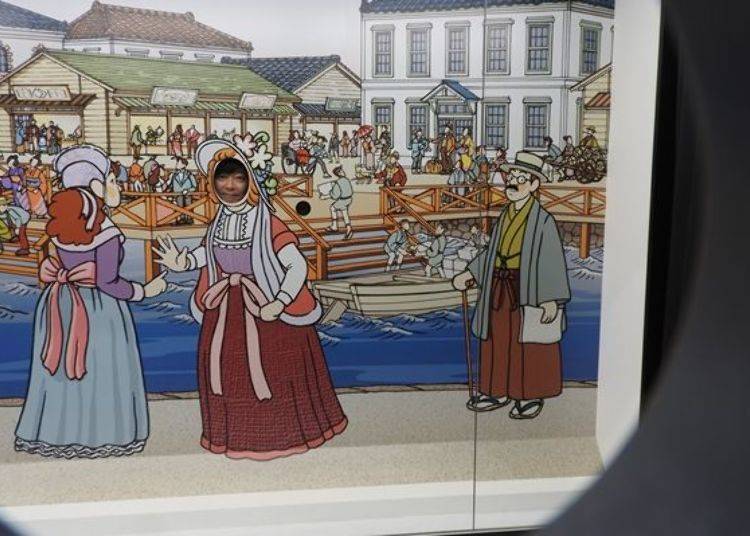
After viewing everything, it’s time for a short break. The Victorian Rose tea room in the building is the perfect place for enjoying a traditional English afternoon tea!
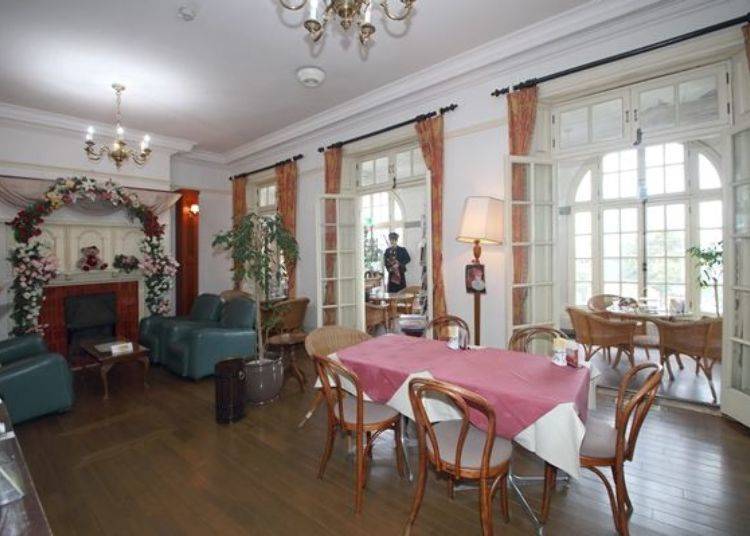
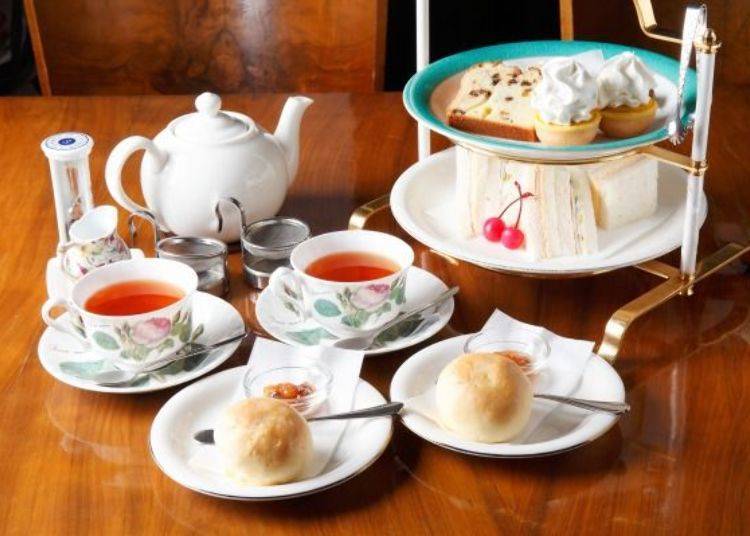
-
Victorian Roseヴィクトリアンローズ
- Address 33-14 Motomachi, Hakodate City, Hokkaido (inside the Former British Consulate of Hakodate)
Open: April 1 ~ October 31 9:00 a.m. ~ 7:00 p.m., November 1 ~ March 31 9:00 a.m. ~ 5:00 p.m.

Last of all let’s visit the Rode Garden in the courtyard. The best time for viewing is from the end of June to the beginning of August. It is possible to visit the courtyard and shop without paying the admission fee.
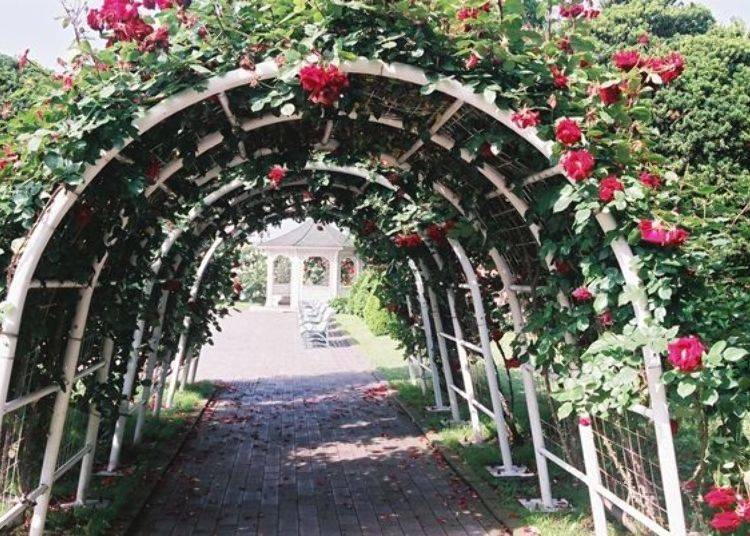

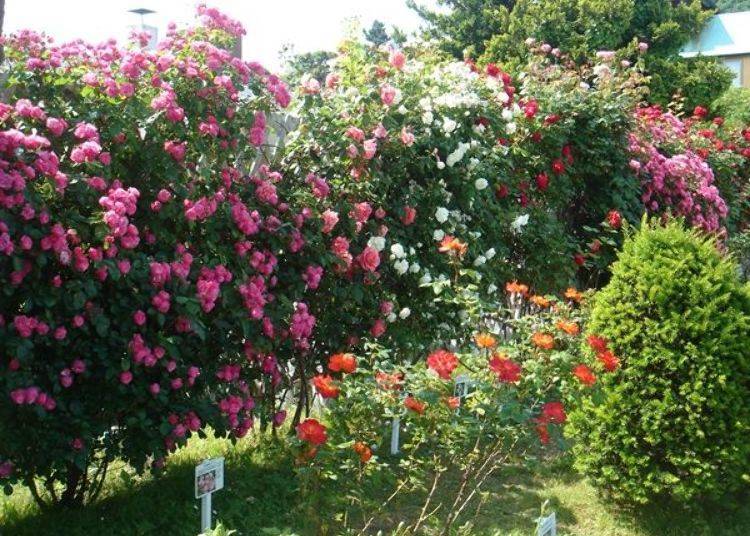
Enjoying an afternoon tea and rest in the rose garden will give you a greater feeling of the English culture that was imported. This facility is well worth seeing. It is the perfect spot for taking a comfortable rest.
-

-
Address
33-14, Motomachi, Hakodate-shi, Hokkaido, 040-0054
View Map -
Nearest Station
Hakodate Station (Hakodate Main Line)
- Phone Number 0138-27-8159
-
Address
33-14, Motomachi, Hakodate-shi, Hokkaido, 040-0054
Enjoy history from the magnificent view of the harbor looking down from Motomachi Park
The next spot is only a short one-minute walk from the Former British Consulate of Hakodate: Motomachi Park.
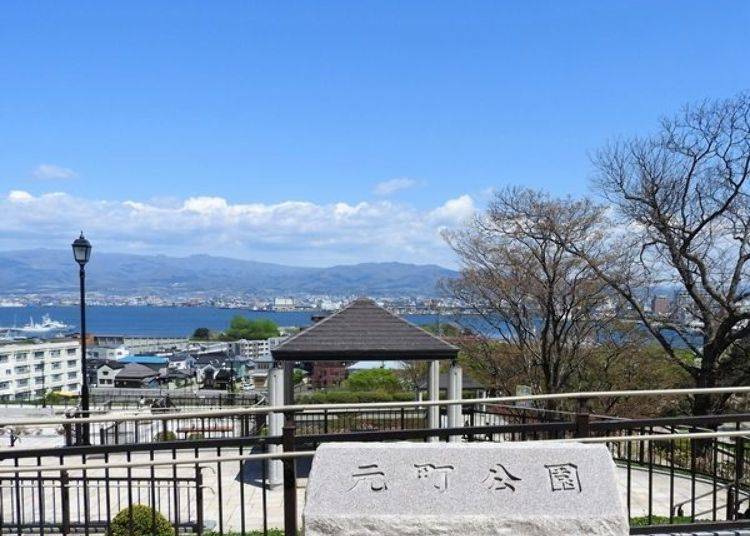

This place where the park is now located has a long history as being the seat of governments of Hakodate. During the Edo Period the Hakodate Bugyosho [Hakodate Magistrate] was located here and after that it was the site of the Hakodate Branch Office of the Hokkaido Government. This is another spot with an excellent view that also gives you a feel of the history of Hakodate as there are several historical remnants in the park.
-
Motomachi Park元町公園
- Address 12-18 Motomachi, Hakodate City, Hokkaido
Admission is free
0138-27-3333 (Motomachi Tourist Information Center)
There are buildings and monuments in Motomachi Park where you can feel history.
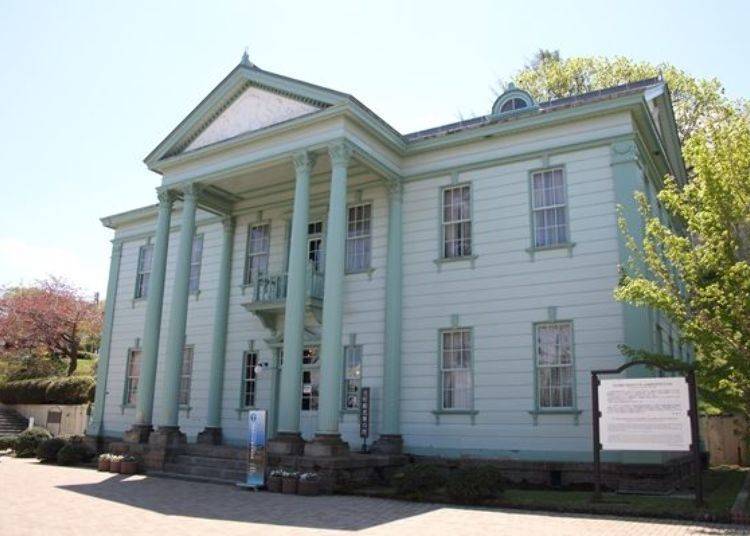
The building is designated as a Tangible Cultural Property of Hokkaido and is popular as a photo spot both from far and up close because of its fine attention to detail.
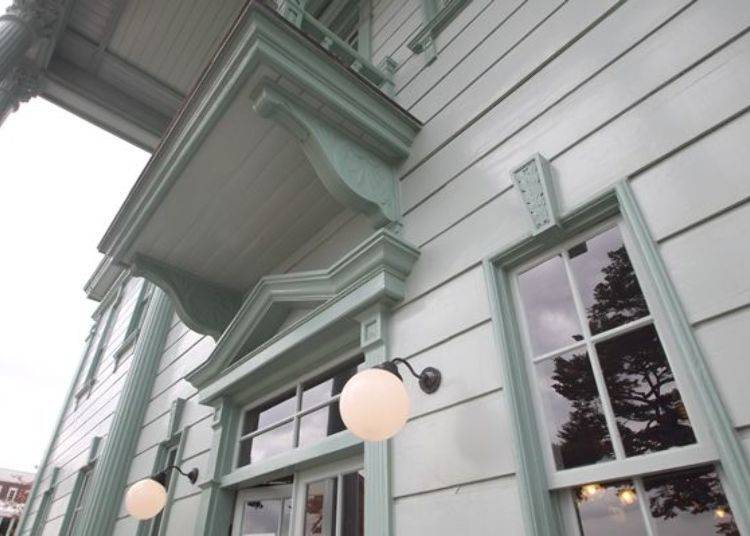

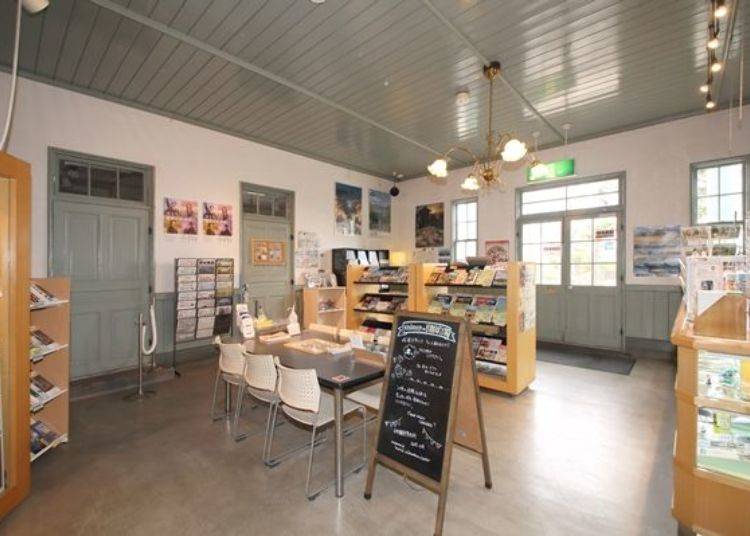
-
Motomachi Tourism Information Center元町観光案内所
- Address 12-18 Motomachi, Hakodate City, Hokkaido
- Phone Number 0138-27-3333
Open: July 1 ~ August 31 9:00 a.m. ~ 7:00 p.m., September 1 ~ June 30 9:00 a.m. ~ 5:00 p.m.
Closed: always open
In the back of the park next to the highest point is the Old Public Hall of Hakodate Ward, a nationally designated important cultural property. The building, built in 1910, is noted for its symmetrical colonial style. Currently it is not possible to see the building because it is enclosed while undergoing preservative restoration which is expected to last until the spring of 2021, but it is definitely a site one should really see when the park is open.

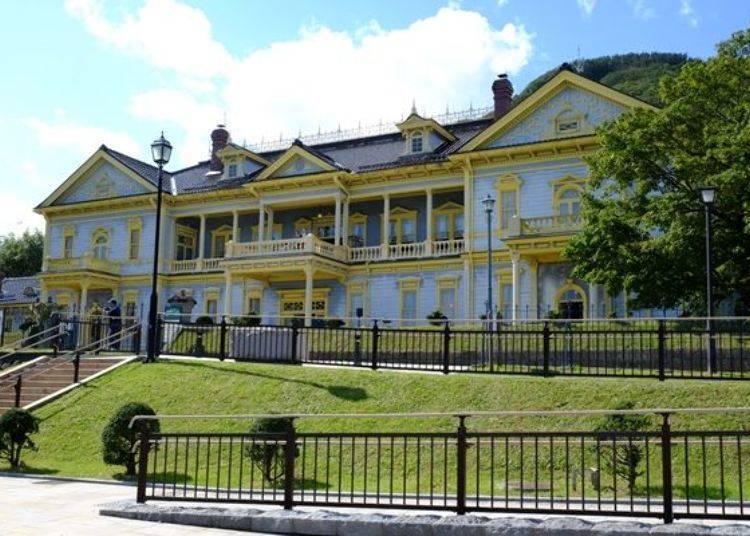
Hachimanzaka is a great spot for taking photos
After leaving Motomachi Park we will next head to Hachimanzaka, a spot where everyone goes for having commemorative photos taken. If you do not stop along the way, the walk up the hill while admiring the view and gift shops on both sides of the road takes about 5 minutes.
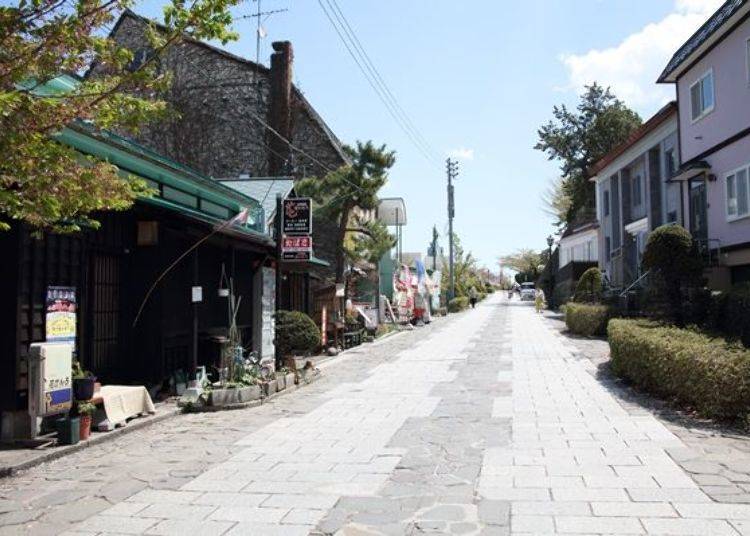
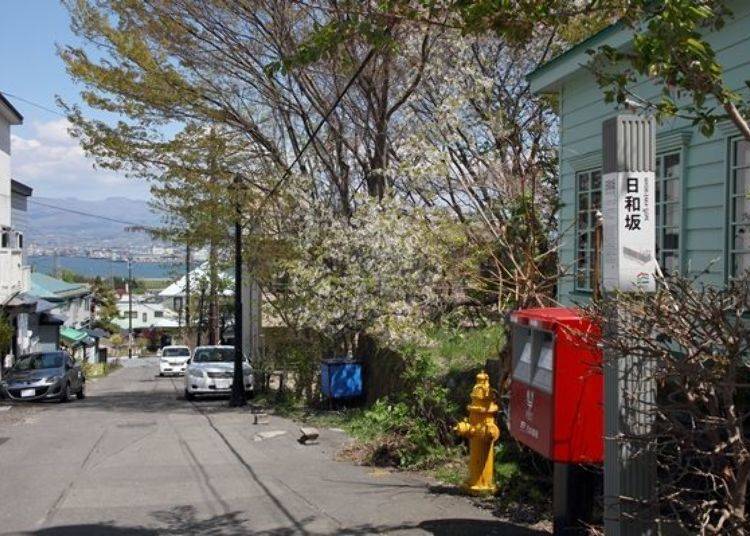
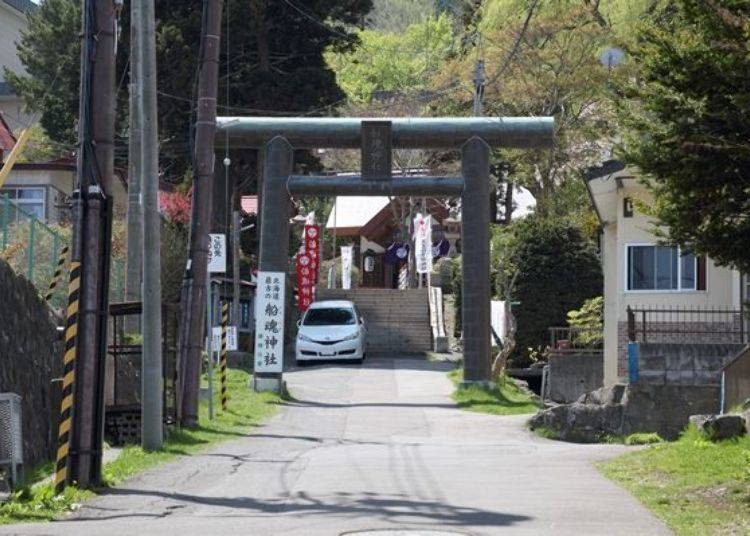
After passing Hiyorizaka and going further along the stone-paved road, I could see a crowd of people with cameras looking to the left. This is Hachimanzaka. I turned left and got my camera ready.
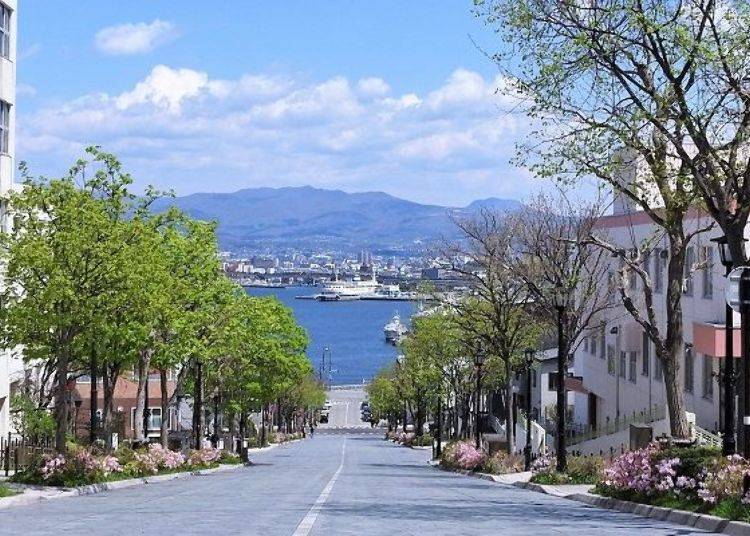
Hachimanzaka is an impressive sight as it extends in a straight line to the sea. The street gets its name from the Hakodate Hachimangu shrine that used to be at the top of the hill. It is a typical view spot in Hakodate, and many views from this slope are used in various tourist guides and TV commercials.
Let’s go down the hill and look at it from a different angle.
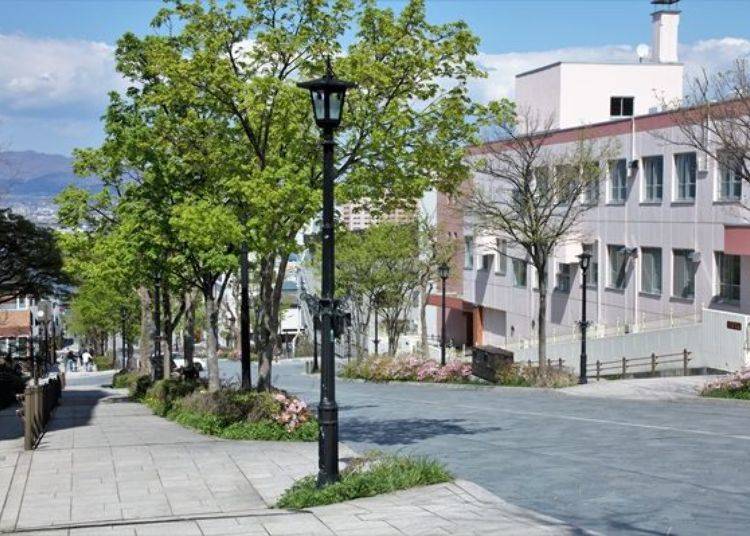
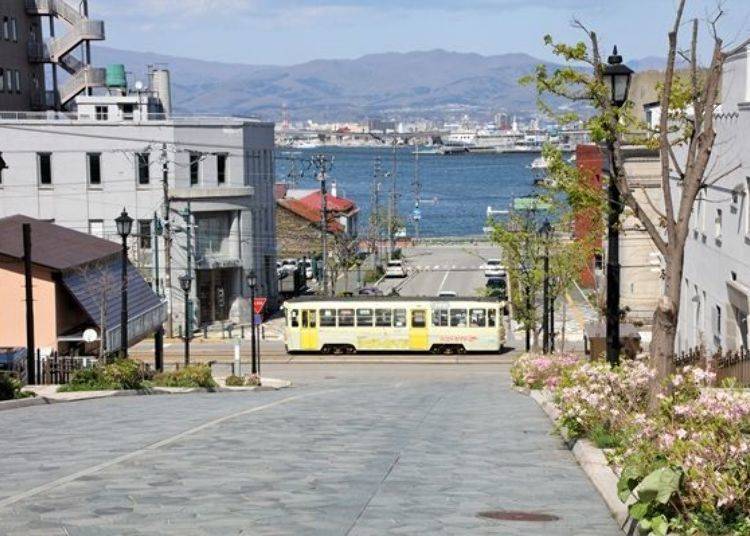
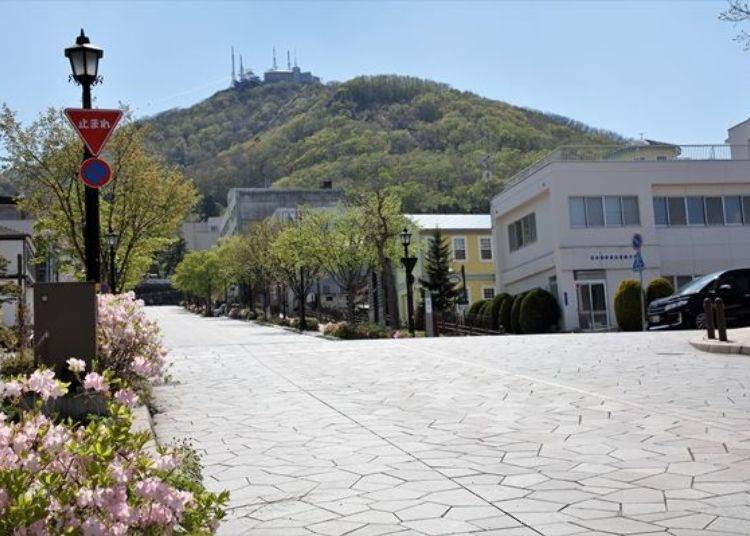
Hachimanzaka is very picturesque. The scenery is so wonderful that often one stands in the street to take a photo, so it is important to remember that cars also frequently go up and down this hill and it is necessary to watch out for them.
Churches along the road are scenes exactly like those you would see in Europe
Let’s head back up Hachimanzaka again taking the stone-paved road.
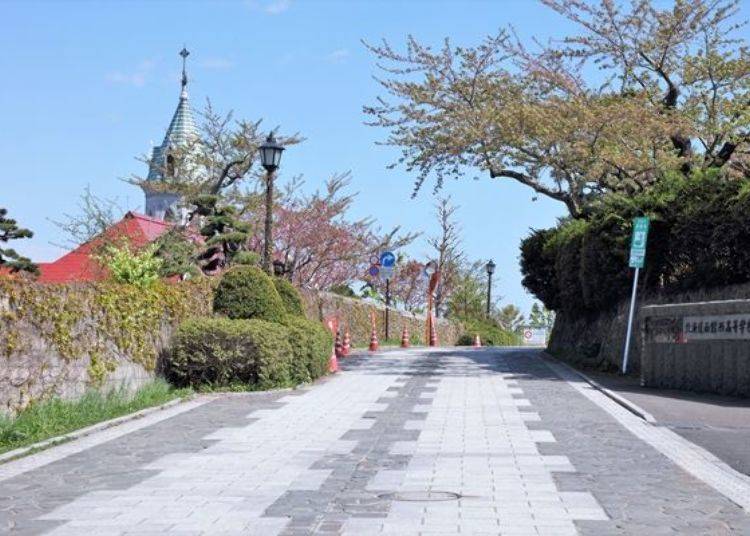
Further ahead churches line both sides of the road giving this area a very foreign atmosphere. On the right are the Hakodate Orthodox Church and Hakodate St. John's Church while on the left is the Catholic Motomachi Church. It is possible to view any of these churches, but when doing so keep in mind that these are not tourist facilities but houses of worship so it is necessary to be respectful and mindful of that. Also note that in some parts of the churches photographing is not permitted.
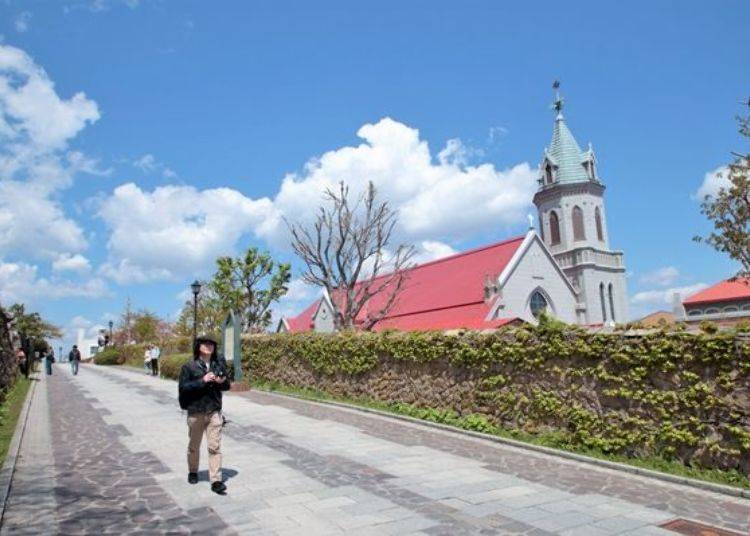
The first one you come to after walking from Hachimanzaka is the nationally designated important cultural property Hakodate Orthodox Church. It’s about a 2-minute walk from Hachimanzaka.
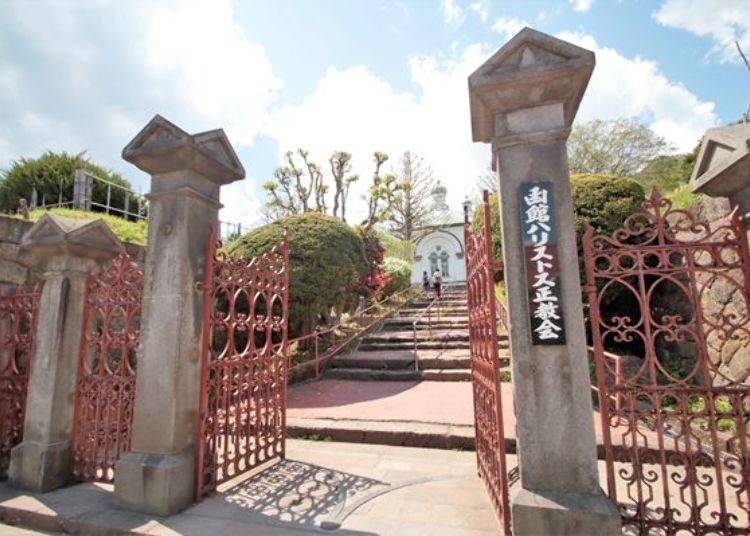
Built in 1860 it is the first Russian Orthodox Church built in Japan. It was destroyed once by fire but rebuilt again in 1916 in its present Byzantine architectural style.
The beautiful sound of the church bell can still be heard every Saturday at 5:00 p.m. and Sunday mornings, usually for three to five minutes.
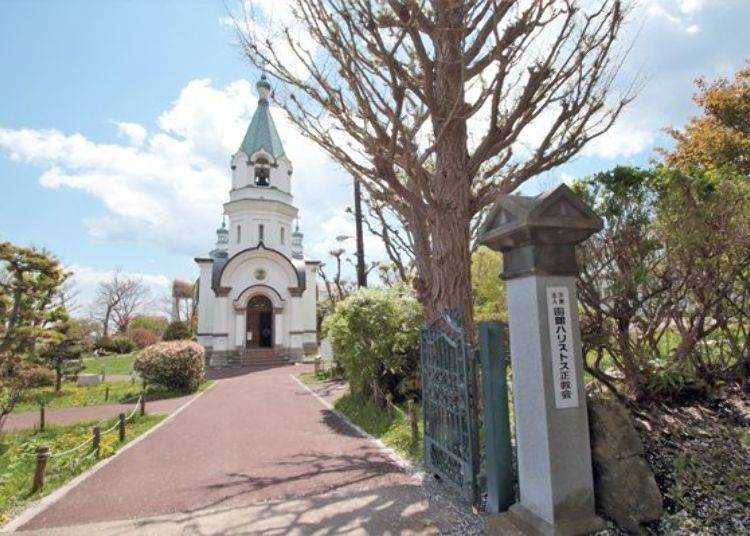
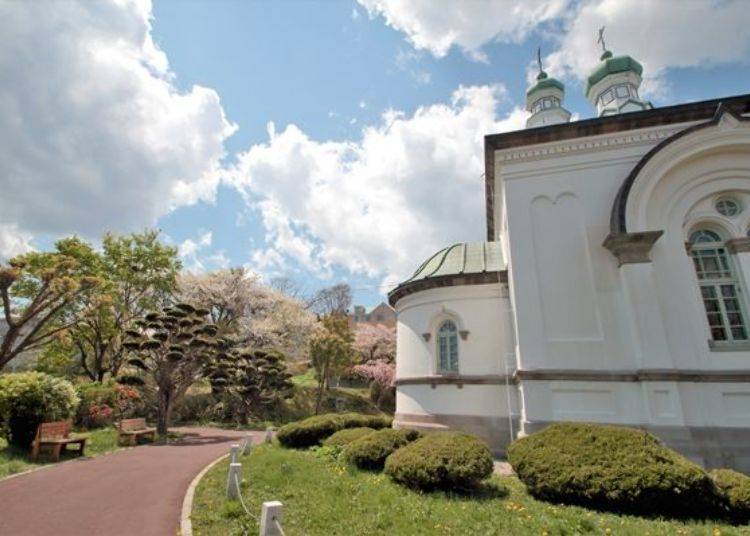
Photographing inside the church is prohibited, but for an offering of 200 yen it is possible to view the inside. The air inside the church is solemn. Crucifixes, icons, and other religious objects create a solemn and tranquil air. In this sanctuary one feels purified in spirit.
When you leave the church grounds from the rear of the church you will come to the Chacha Nobori, a stone-paved hill going from left to right. After you have gone up a little ways, turn and look back.
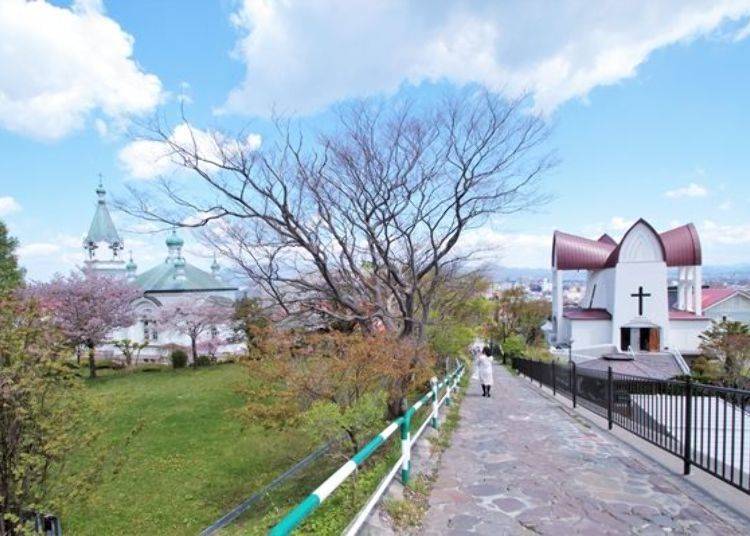
I would have liked to have been able to go up the hill and take photos of the churches and scenery, but entry is prohibited because this area is all private land. Chacha Nobori is an excellent photo spot not known to many.
Let’s next go to the Hakodate St. John's Church that can be seen on the left. Descending Chacha Nobori we can enter the church precincts on the right on our way down the hill.
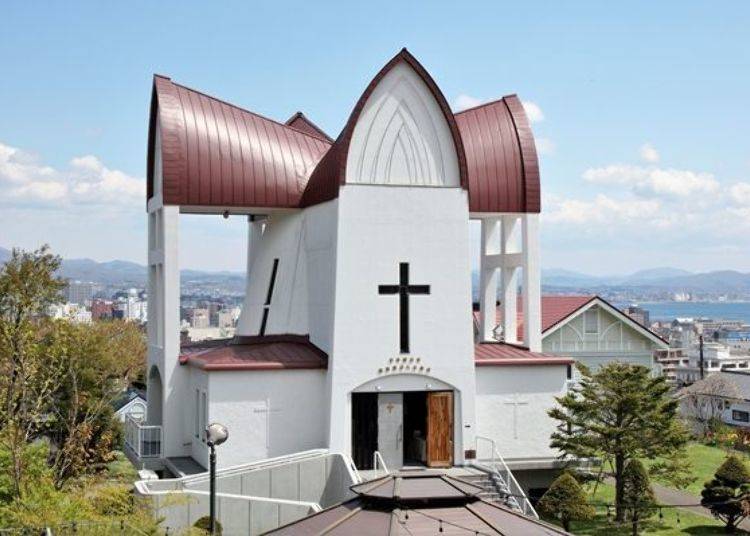
This Episcopal Church of England was established in 1874 and the present structure was built in 1979. From May 1st to November 3rd every year, permission can be obtained to photograph part of the inside of the church.
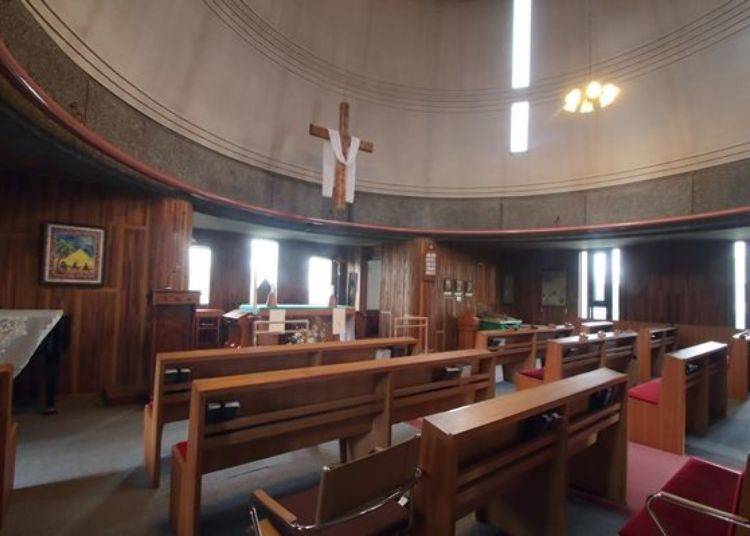
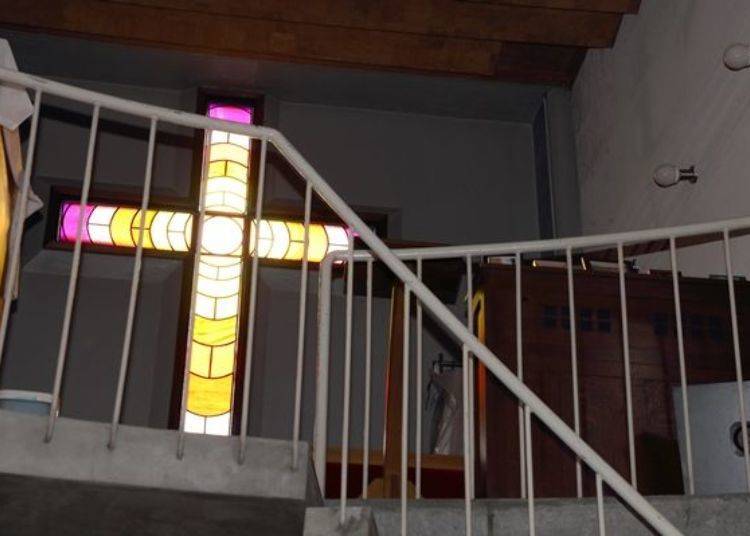

Leave the church, go around the back of the building and go down the stairs to the grounds outside.
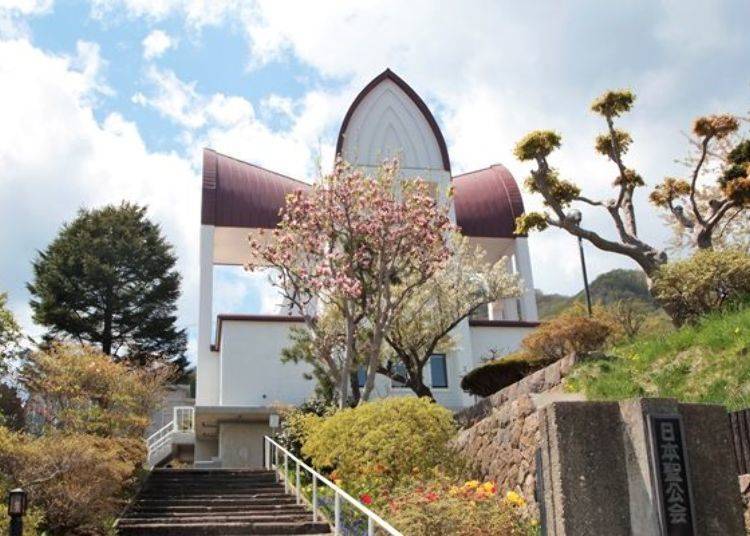
-

-
Address
3-23, Motomachi, Hakodate-shi, Hokkaido, 040-0054
View Map -
Nearest Station
Jujigai Station (Hakodate Tram Line 2 / Hakodate Tram Line 5 )
- Phone Number 0138-27-3333
-
Address
3-23, Motomachi, Hakodate-shi, Hokkaido, 040-0054
Leaving the church and going to the left you will immediately come to a crossroad. To the left is Chacha Nobori, straight ahead is the stone-paved road that continues from the direction of Hachimanzaka. The road to the right is Daisanzaka which runs straight down towards the sea. If you take a photo in this area, turn right and go down Daisanzaka to the Catholic Motomachi Church.
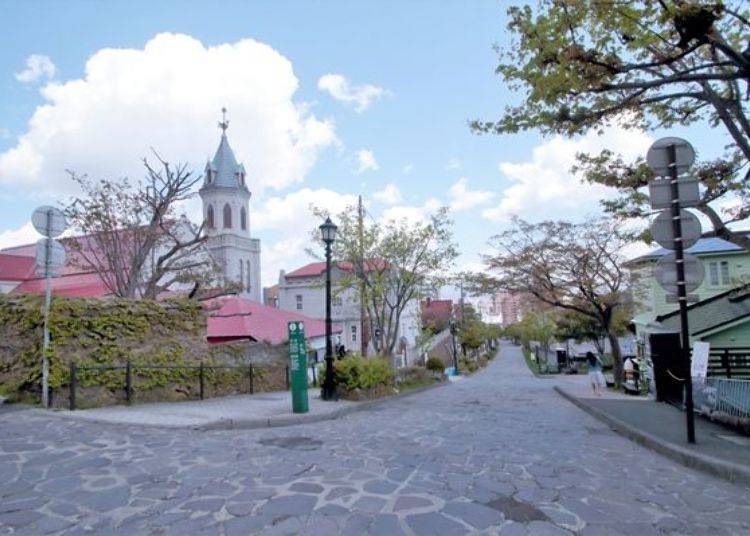
The Catholic Motomachi Church began in 1859 when a French missionary set up a residence in the nearby Shomyoji temple grounds in order to say Mass for foreigners. A temporary church was created in 1867 and the church itself was erected in 1877, but was subsequently destroyed by a great fire. The present church was rebuilt in 1923.
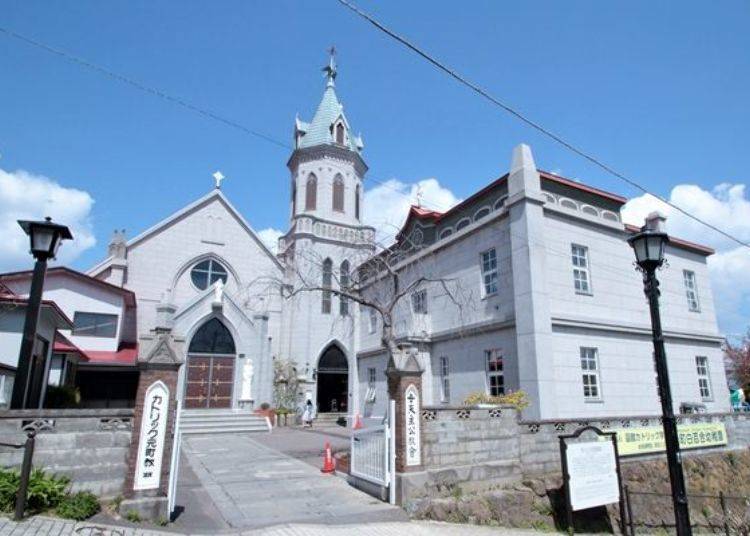
Although taking photos inside the church is prohibited, you can enter it. Don't miss the altar which was given by Pope Benedict XV.
Hakodate: A town that is a blend of Western and Japanese
After leaving the church, go straight at the T-junction intersection in front of the Catholic Motomachi Church. On the left side down the hill, you can see the large, black tiled roof of the Shinshu Otani Sect Hakodate Betsuin (Higashi Honganji Hakodate Betsuin).
After about a 2-minute walk from the church, you will come to a large hill called Nijukkenzaka that descends to the left. The view from here is also excellent!
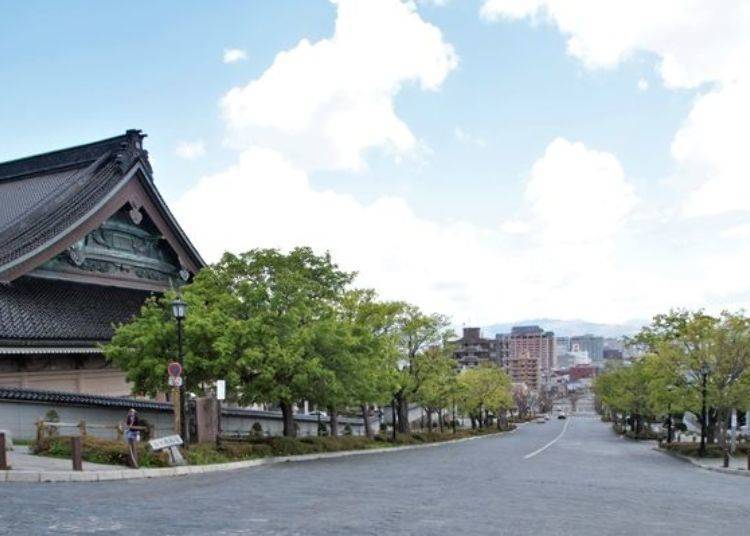
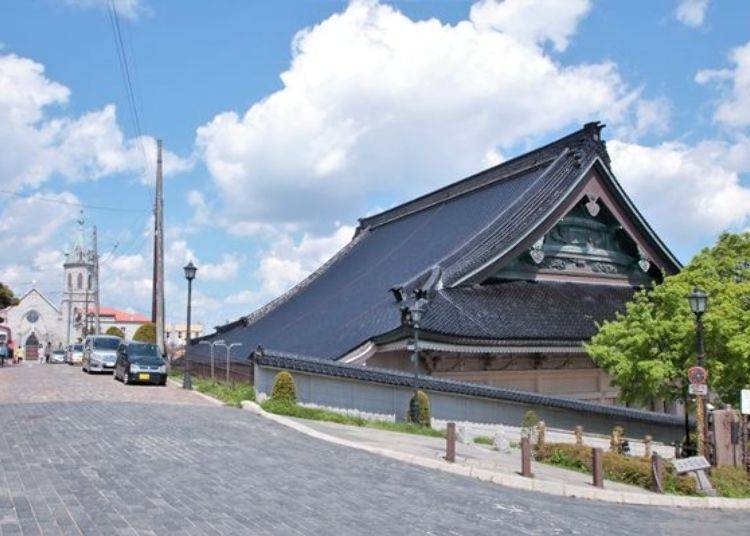
While going down Nijukkenzaka if you turn left you will see the entrance to the Hakodate Betsuin (Higashihonganji Betsuin).


Founded in another place in Hakodate in 1668, after being burned down in a great fire, it was moved to its present location during the Meiji period. After it was again destroyed by fire, it was rebuilt in 1915 in reinforced concrete becoming the first temple in Japan to be so built.
-
Shinshu Otani Sect Hakodate Betsuin (Higashi Honganji Hakodate Betsuin)真宗大谷派 函館別院(東本願寺函館別院)
- Address 16-15 Motomachi, Hakodate City, Hokkaido
- Phone Number 0138-22-0134
Viewing times 7:00 a.m. ~ 5:00 p.m., *Not possible to enter when there are Buddhist services.
The walkthrough of places where there were various scenes of Japan and the West, churches and temples, comes to an end here. This walking route extending about 1.5 km from the Suehirocho tram stop to here has many worthwhile things to see.
It is packed with many scenes and facilities noted for their foreign atmosphere. When you visit I recommend you follow this course. Places so beautiful that they look as though they were in a movie or painting are everywhere you look. You definitely will want to have your camera with you! These are the best sightseeing spots in Hakodate.
Afterwards visit Mt. Hakodate and the Bay Area
Mt. Hakodate and the Bay Area are two other very popular sightseeing spots in Hakodate, so why not visit them, too?
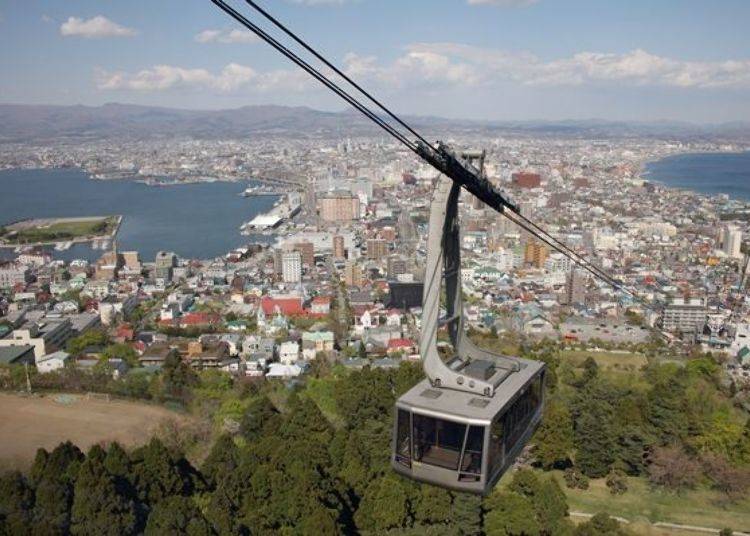
If you decide to go to Mt. Hakodate to see the famous night view, continue on up Nijukkenzakka and you will come to the Mt. Hakodate Ropeway station. It is about a 3-minute walk from Higashihonganji Betsuin.
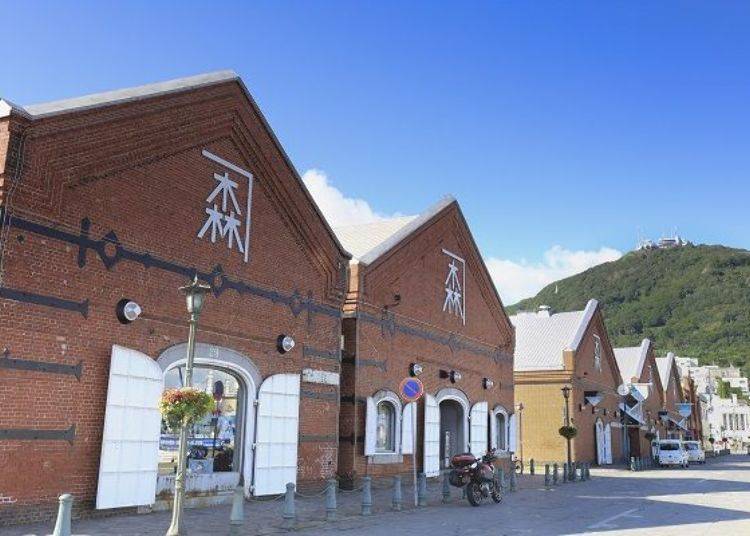
To get to the Bay Area with its row of brick buildings like Kanemori Warehouses along the port, go down Nijukkenzaka and cross over the large road on which the trams run, go straight and it will be on the left side. It’s about a 10-minute walk.
If you are going towards JR. Hakodate Station, turn right on the tram road and go to the Jujigai tram stop. It is about a 7-minute walk from the tram stop; it takes about 6 minutes to get to JR Hakodate Station by tram. When you visit Hakodate I hope you will have a fun-filled experience.
Book an unforgettable experience in Hakodate!
Make your trip extra memorable by booking one of these recommended tours on our partner site, Rakuten Travel Experiences!
- Area
- Category
*Prices and options mentioned are subject to change.
*Unless stated otherwise, all prices include tax.
Popular Tours & Activitiess
Recommended places for you
-
Appealing

Rukku and Uohei
Izakaya
Sapporo / Chitose
-
Appealing

Noboribetsu Onsen
Hot Springs (Onsen) & Bath Houses (Sento)
Noboribetsu / Lake Toya
-

Niseko Village Ski Resort
Skiing & Snowboarding
Niseko / Rusutsu
-
Appealing

Mt. Hakodate Observatory
Forests & Mountains
Hakodate
-
Appealing

Sapporo Ramen Yokocho
Ramen
Sapporo / Chitose
-
Appealing

Shirogane Blue Pond (Aoiike)
Rivers, Lakes & Canyons
Furano / Biei / Sounkyo
-
Ad

Sapporo SATUDORA Shopping Guide: Get Souvenirs, Medicine & More at This Iconic Drugstore (Special Deal Inside!)
-

7 Iconic Hokkaido locations that will make your Instagram shine
by: Himanshi Shah
-

Scenic Road Trip from Hakodate to Matsumae: Stunning Views, Traditions, and Tasty Delights
by: Nobuka Kawashima
-

BIGGEST SALE ALERT! SATUDORA Tax-Free Winter Sale: Stack Coupons for Massive Savings!
by: Guest Contributor
-
Ad

Cycling Through Hokkaido: Discover the Beauty of Memuro and the Tokachi Plains
-
Ad

Smart Ways to Avoid Crowds and Enjoy a Safe, Comfortable Trip to Otaru.
-

Sapporo New Chitose Airport (CTS): Complete Guide to Restaurants, Souvenirs, Shopping & More!
-

6 Most Scenic Spots Around Mount Yotei, Hokkaido: Gorgeous Sunflowers & More!
-

Japan's Bath Culture: Tips You Should Know!
-

Noboribetsu Onsen: 5 Best Things to Do in Japan's Famous Hot Springs Town!
-

Secrets to Shopping in Japan: Guide to Annual Sales in Japan & Where to Shop
by: Miyu Shimada
-

Ultimate Tokyo Transit Guide: JR, Subways, and Private Railways Explained, Plus Suica/PASMO and Money-Saving Passes
- #best sushi hokkaido
- #things to do hokkaido
- #best ramen sapporo
- #what to bring to japan
- #new years in tokyo
- #what to buy in ameyoko
- #japanese nail trends
- #what to do in odaiba
- #onsen tattoo friendly tokyo
- #daiso
- #best sweets otaru
- #japanese fashion culture
- #best nature furano
- #japanese convenience store snacks
- #best japanese soft drinks


















